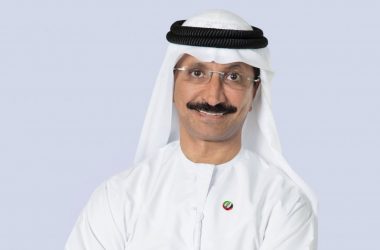 The Dubai-based Majid Al Futtaim Properties (MAFP) is one of the biggest shopping mall, hotels and mixed-use communities developers and operators in the region. The company has also been branching out of the UAE with ambitious projects in Syria, Lebanon and Egypt.
The Dubai-based Majid Al Futtaim Properties (MAFP) is one of the biggest shopping mall, hotels and mixed-use communities developers and operators in the region. The company has also been branching out of the UAE with ambitious projects in Syria, Lebanon and Egypt.
Though the business has been growing at a break-neck speed over the last 10 years, MAFP’s investment in Information Technology hasn’t really kept pace with the dynamic environment. Now with management realising the strategic value of IT as a key business driver and to be more strategically aligned with business strategy and with a new VP of technology at the helm, things are starting to change.
The centrepiece of MAFP’s current IT architecture is its 90 sq. meter data centre, which caters to 2,400 odd employees of the Majid Al Futtaim Group, including 350 plus users from MAF Properties. This tier-2 data centre with around 150 servers has high availability, power redundancy and environment and security control systems. In addition, the company has smaller data centres in its remote locations. MAFP is in the midst of rolling out a national and international managed MPLS network across its asset portfolio as an integrated topology for improved scalability, redundancy, and disaster recovery.
MAFP is probably one of the first companies in the region to mandate infrastructure virtualisation extensively and is now actively evaluating the cloud computing model. “We are moving to a virtualisation platform using Microsoft Hyper-V because our server utilisation is very low – in fact, it is just 5-10% in some cases. We are trying to utilise cloud computing as best as we can to improve our computing efficiency and shrink our internal footprint. As an IT shared services organisation, we cater to the demands of the MAF Group companies for services such as email, file storage, intranet, etc. so we should be able to provision servers and storage on demand and charge them based on CPU and storage usage, and this is why a private cloud platform makes sense. It increases cost transparency and provides predictability of the IT charge back model.”
MAFP has embraced the low TCO model of a Microsoft centric environment by going live on Exchange 2010, Systems Center, Unified Access Gateway, Forefront Endpoint Protection, and is one of the first companies in the region to do so. “In addition, we are rolling out Windows 7 across the desktop infrastructure. A new SAN environment is being implemented to consolidate our disparate storage and provide for better disaster recovery,” says Raj Patel, Vice President of IT, Majid Al Futtaim Properties.
Currently, the biggest project being planned at MAFP is an ERP system. “We are using an old version of JD Edwards, so we are moving to a new ERP system,” says Patel. The company has earmarked a significant investment for the project which will be rolled out over the next 2-3 years. “We may be looking at a hybrid cloud model to host components of our ERP system with a service provider,” adds Patel. Besides JD Edwards, the critical applications running on MAFP networks include leasing software and SharePoint for document and workflow management. For construction collaboration software, MAFP uses Aconex which is a testament to embracing the SaaS cloud model.
The campus network runs on a fibre network and MAFP has fibre running in the data centre for server and switch connectivity. One gig is provided to the desktop as the company is one of the biggest users of VoIP and desktop video. “The plan is to stabilize, fortify, and ready the infrastructure to support a new ERP and the growth in remote connectivity from our international locations,” says Patel.
Patel says his mandate is to make IT an integral part of the company’s day-to-day operations and help the organisation to leverage technology to power business growth. “Earlier, IT was perceived as a separate entity which simply ‘fixed’ things; now MAFP management is starting to see IT as a key business enabler. And we are one of the few real estate companies to have taken advantage of the downturn to invest in technology,” sums up Patel.





